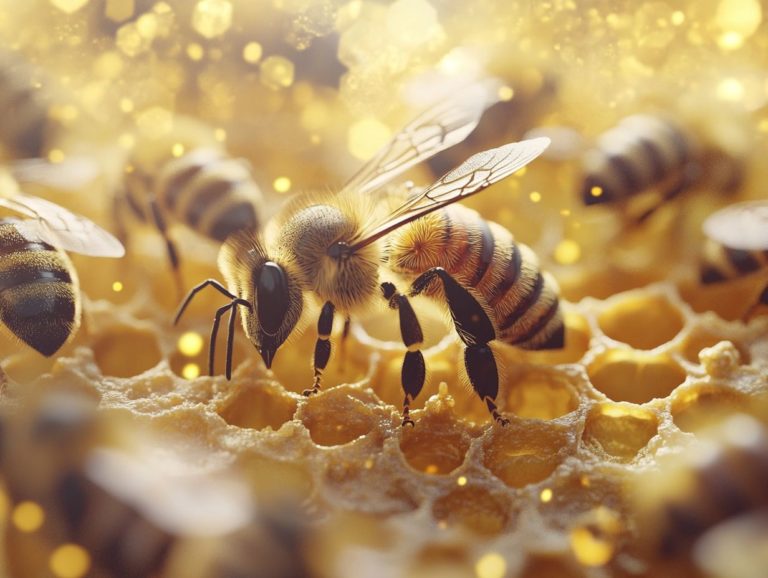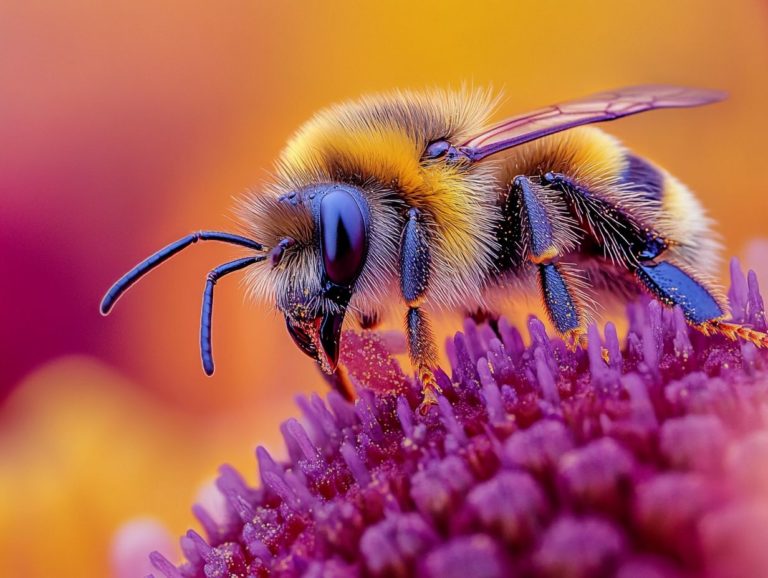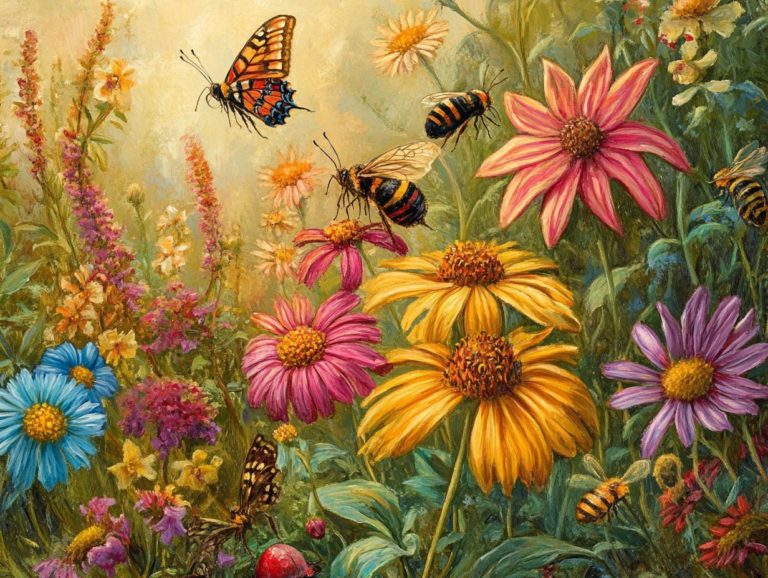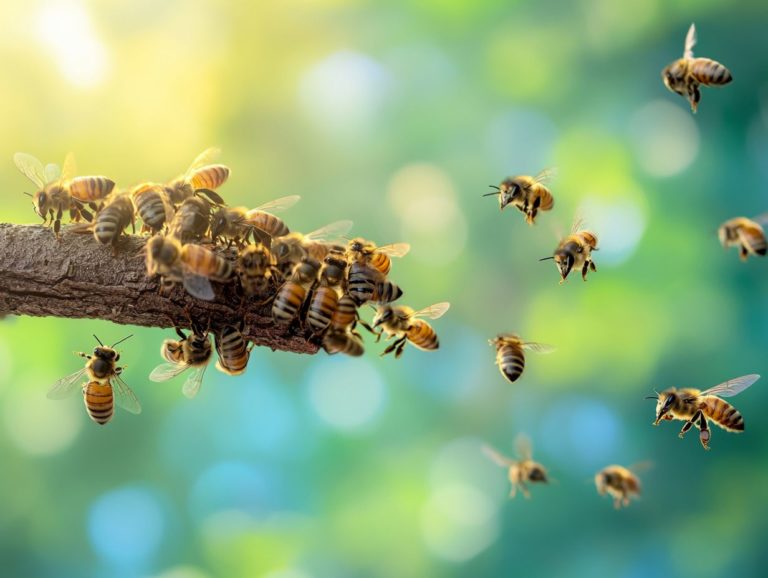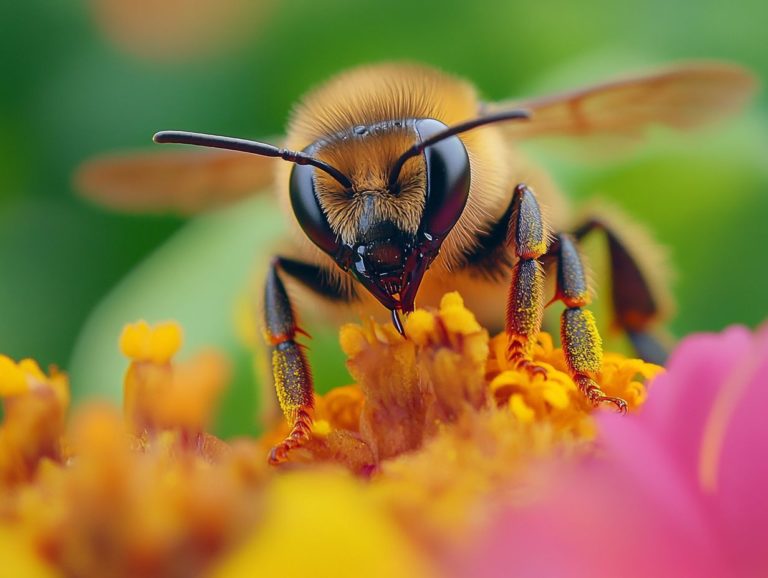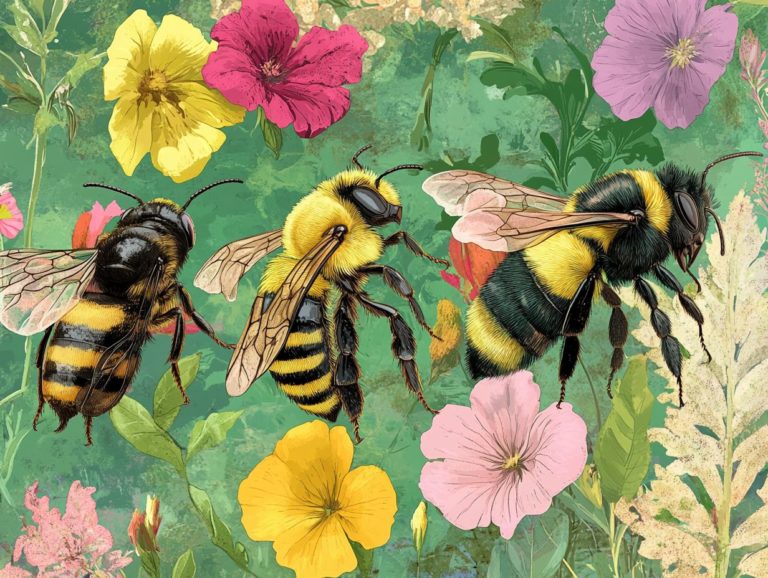Bees and Their Role in Biodiversity
Did you know that without bees, our food supply could be at risk? Let’s explore why protecting these pollinators is crucial. Bees play an essential role in maintaining biodiversity, acting as keystone species that uphold the health of our ecosystems through their vital pollination efforts. This article delves into the reasons why bees are truly indispensable, highlighting their contributions to pollination and the benefits they provide to the environment. It also addresses the concerning decline in bee populations, exploring the various factors driving this trend and the potential repercussions for biodiversity, as discussed in studies published in Nature Ecology & Evolution.
You will discover actionable steps that both individuals and organizations can take to protect these crucial pollinators. The article will also explore how we can protect these vital pollinators and consider the future of bees and the ecosystems they support, encouraging a proactive approach to their preservation.
Contents
Key Takeaways:
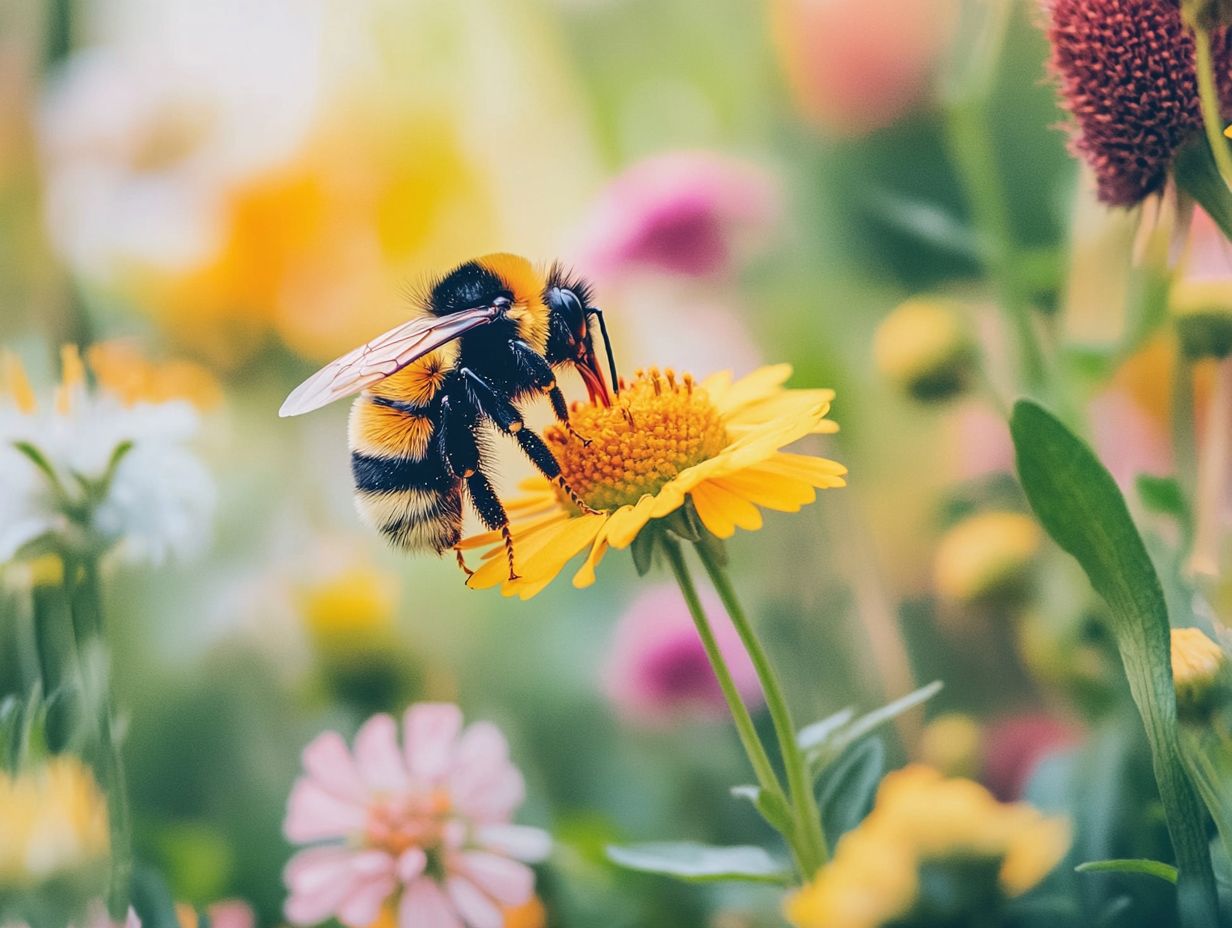
Bees are vital for biodiversity and ecosystem health.
They are essential for pollination, which boosts crop yields and food production.
The decline in bee populations threatens the diversity of plants and animals.
The Importance of Bees in Biodiversity
Bees hold a crucial position in preserving biodiversity and enhancing ecosystem services, both of which are integral to sustainable development. As key pollinators, they significantly boost crop yields and ensure food security across various regions, including New Jersey, Pennsylvania, and California.
Research from esteemed institutions like Rutgers University and the National Science Foundation underscores the importance of diverse bee species, such as Apis mellifera and Apis cerana, in promoting effective pollination processes. This supports agricultural production and strengthens natural ecosystems, highlighting the interconnectedness of these vital contributors to our environment. Experts like Nancy Lemanski, Michelle Elekonich, Rachael Winfree, and Neal Williams have significantly contributed to this field.
Why are Bees Considered Keystone Species?
Bees are recognized as keystone species, playing a critical role in pollinating a wide variety of plants that enhance biodiversity and ecosystem function.
These remarkable insects are instrumental in the reproduction of countless flowering plants, including your favorite fruits, vegetables, and nuts like Bertholletia excelsa. They ensure the sustainability of various ecosystems by facilitating the transfer of pollen, allowing plants to produce seeds and fruits that serve as a vital food source for many organisms, from herbivores to predators. This illustrates their profound impact on the entire food web.
Their essential services contribute to enhancing genetic diversity among plants, a critical factor for the resilience of ecosystems in the face of change. The decline of bee populations could disrupt these crucial processes, possibly leading to diminished plant cover, reduced food availability for other species, and an overall decline in ecosystem stability.
Our planet’s health heavily relies on these extraordinary little pollinators.
Join the fight to save our bees and secure the future of our ecosystems today!
How Do Bees Contribute to Pollination?
Bees stand as some of the most efficient pollinators, playing a critical role in crop pollination and significantly enhancing agricultural production by helping flowers reproduce.
Meet the incredible bees that power our plants! These remarkable insects, including honeybees, bumblebees, and a variety of solitary bee species, work in harmony to transfer pollen from the male parts of flowers to the female parts. This vital function ensures the fertilization necessary for the development of fruits and seeds.
Each type of bee brings its own unique contribution to this process; for example, honeybees are often managed in hives by farmers to maximize crop yields. Meanwhile, wild pollinators like native bees provide essential support within natural ecosystems. This dynamic between managed bees and wild pollinators is critical for maintaining ecosystem function.
The economic importance of pollination is immense, as it not only boosts food production but also enhances market value, which fosters a robust agricultural system that promotes environmental health.
What Other Ecosystem Services Do Bees Provide?
Beyond their role in pollination, bees offer a multitude of ecosystem services the benefits that nature provides, such as clean air and food that enhance biodiversity and food security, influencing both natural ecosystems and human agricultural systems. This is crucial for sustainable development and aligns with the United Nations Sustainable Development Goals.
Their diligent activities play a vital role in sustaining plant health by supporting the reproductive processes of flowering plants, which in turn fosters robust growth and resilience within various habitats. This intricate interconnectedness is essential, as bees help maintain diverse ecosystems that underpin complex food webs.
These food webs are crucial for the survival of numerous species and contribute to overall ecosystem stability. As bees facilitate plant reproduction, they inadvertently promote a variety of crops that are essential for global diets. Therefore, their decline presents significant threats not only to biodiversity but also to human nutrition and economic stability, emphasizing the urgent need for their conservation to ensure the viability of future food systems. Urban ecology initiatives are increasingly focusing on integrating bee-friendly habitats within city landscapes to support these efforts.
The Decline of Bees and Its Impact on Biodiversity
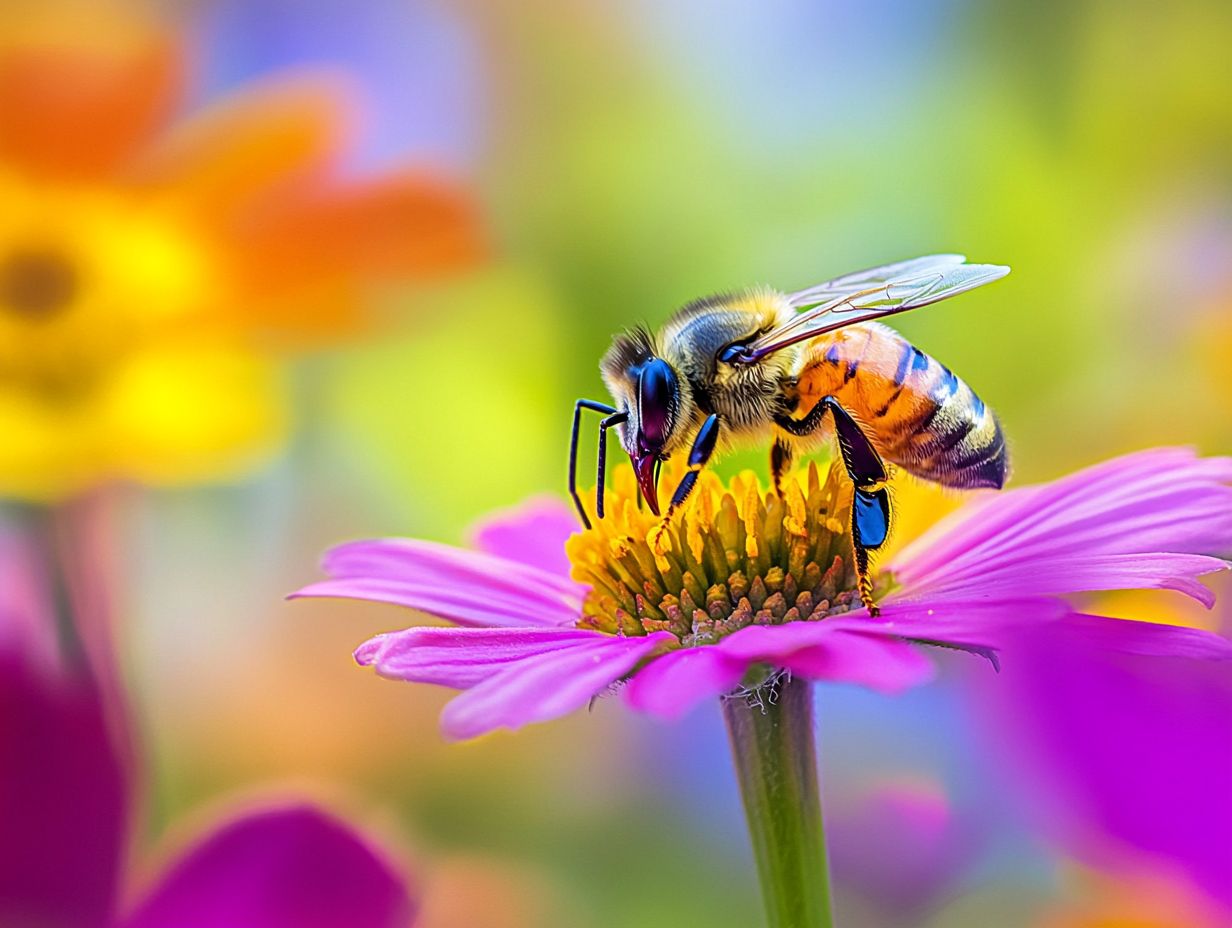
The decline in bee populations presents a serious threat to biodiversity and ecosystem services, putting food security and agricultural sustainability at risk in various regions, including New Jersey, Pennsylvania, and California. Act now to protect these vital creatures before it’s too late!
This pressing issue demands your attention, as it impacts not only local ecosystems but also the broader agricultural landscape.
What Factors are Contributing to the Decline of Bees?
Several factors contribute to the alarming decline of bee populations, including habitat loss, pesticide exposure, climate change, and diseases affecting both managed and wild bees. The idea that having more types of bees helps protect the ecosystem suggests that higher biodiversity, including diverse bee species, can buffer ecosystems against these stresses.
These elements are intricately interconnected, forming a multifaceted threat to these crucial pollinators. Habitat loss, primarily driven by urbanization and agricultural expansion, has resulted in a significant decrease in forage and nesting sites. In certain regions, studies indicate that nearly 50% of natural habitat has vanished.
Pesticide exposure, particularly from neonicotinoids, has been shown to impair bees foraging abilities and reproductive success, leading to an estimated annual loss of 30% to 40% of honeybee colonies in the U.S. Climate change only intensifies these issues, disrupting the timing of plant blooming and reducing food availability.
The prevalence of diseases such as Varroa mites has surged, with research demonstrating that these parasites can devastate entire colonies, thereby threatening the overall variety of life that depends on bees for pollination.
What are the Consequences of Bee Decline on Biodiversity?
The decline of bee populations can lead to serious consequences for biodiversity. It disrupts how different living things support each other in nature and threatens food security for those who rely on crops dependent on pollinators.
Bees play a crucial role in how plants reproduce, supporting a variety of wildlife species. As pollination diminishes, plant diversity suffers, creating a domino effect throughout the food web. Herbivores may find it more challenging to locate food, ultimately impacting their predators.
Consider the challenges agriculture faces; many staple crops, such as fruits, vegetables, and nuts, rely heavily on bee pollination. This decline jeopardizes nutritional availability for everyone and could escalate food production costs, leading to increased scarcity and potential economic repercussions for both farmers and consumers.
Ways to Protect and Support Bee Populations
Protecting and supporting bee populations requires a united effort from individuals, governments, and organizations alike. By working together, we can create sustainable environments that promote bee health and enhance biodiversity.
Your actions, no matter how small, contribute to a larger movement dedicated to preserving these vital pollinators.
What Can Individuals Do to Help Bees?
You can support bees by adopting bee-friendly gardening practices, reducing pesticide use, and creating habitats that nurture local bee populations.
By cultivating a diverse range of flowering plants that bloom at different times throughout the seasons, you ensure a consistent food source for these crucial pollinators. Minimizing harmful chemicals and opting for organic alternatives can significantly lower the risks faced by these vital beings.
Engaging with your community through local conservation efforts or joining a gardening club centered on native plants fosters a sense of shared responsibility. Educating others about the importance of bees and their essential role in sustaining ecosystems can inspire collective action to protect them, leading to healthier pollinator populations.
What are Some Government and Organizational Efforts to Protect Bees?
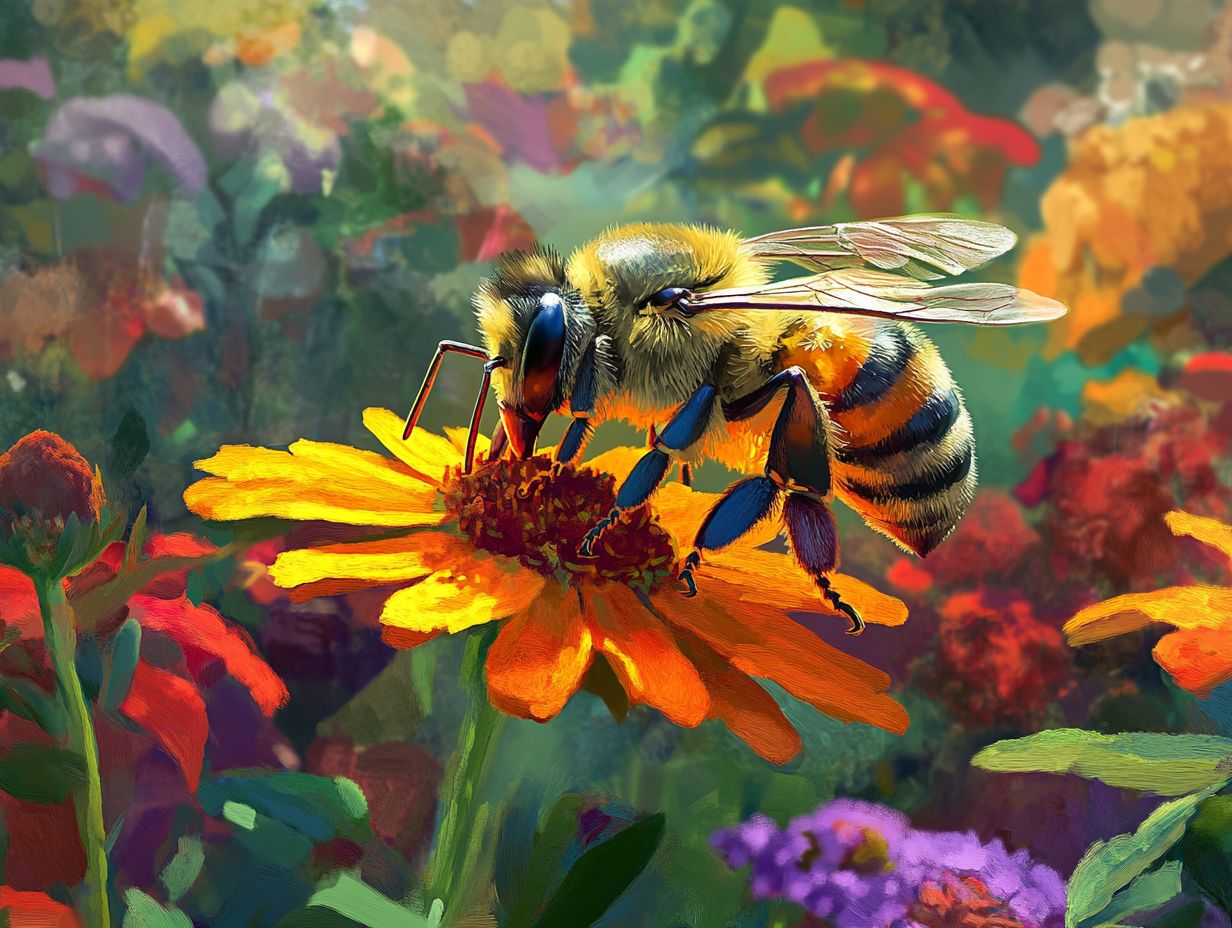
The U.S. Department of Agriculture and the National Science Foundation, among others, are working on various initiatives to protect bee populations. These efforts include funding research on bee health, promoting sustainable agricultural practices, and supporting conservation programs.
Various governmental agencies and organizations, such as Rutgers University and the National Science Foundation, are diligently working to protect bees through initiatives aimed at habitat restoration, conservation, and sustainable agricultural practices.
Among these efforts, programs like the U.S. Department of Agriculture’s Bee Habitat Program and the European Union’s Pollinators Initiative stand out. These initiatives pave the way for creating wildflower corridors and provide valuable education to farmers on effective pesticide reduction techniques. Neal Williams from the University of California and Rachael Winfree from Rutgers University have significantly contributed to these programs.
Non-governmental organizations, such as the Xerces Society, have developed successful pollinator-friendly farming guidelines, aiding farmers in integrating more bee-friendly practices into their operations. For example, a recent project in California revealed that by planting native flowering plants around almond orchards, local bee populations experienced a significant increase. This highlights the powerful impact of collaboration between farmers and conservationists like Nancy Lemanski and Michelle Elekonich.
Now is the time to act! Take part in local conservation initiatives today to make a difference for our bees!
The Future of Bees and Biodiversity
The future of bees and their vital role in biodiversity relies heavily on your capacity to address the threats they face and to implement robust conservation strategies. This has been emphasized by various global organizations, including the United Nations and its Sustainable Development Goals.
As you navigate this intricate landscape, predictions reveal a future filled with both challenges and opportunities. These opportunities are particularly evident within urban ecology and agricultural environments in regions like New Jersey and Pennsylvania.
Your actions can significantly influence the trajectory of these essential pollinators, shaping the health of ecosystems for generations to come.
What Are Some Predictions for Bee Populations in the Future?
Predictions for bee populations indicate that, without major changes in how we protect bees, declines may persist. This will ultimately impact biodiversity and ecosystem services globally.
Experts remain divided on the future of these essential pollinators. Some foresee a dramatic decrease if current trends continue, while others highlight the potential for recovery. This recovery is possible if innovative conservation strategies and robust environmental policies are implemented.
This disparity in forecasts underscores the critical need for ongoing research and data collection to guide effective decision-making. You can play a part in this by advocating for habitat restoration, sustainable agricultural practices, and targeted legislation, all vital in reversing the current downward trend.
Studies show that some bee species are resilient under specific conditions, offering a glimmer of hope. With the right investment in conservation efforts, there exists a real opportunity to stabilize and even enhance bee populations in the future. Your engagement in these initiatives could make a significant difference.
How Will the Decline of Bees Affect Biodiversity in the Long Term?
The long-term decline of bees is set to bring about significant reductions in biodiversity. This decline will disrupt the delicate balance of ecosystem functions, leading to a concerning drop in food security and agricultural productivity.
Research on specific plants, like Bertholletia excelsa, has shown how crucial bees are for the fertilization processes of many species. These remarkable pollinators are essential for the fertilization of countless plants, including many crops in regions like New Jersey and Pennsylvania.
The absence of bees could set off a domino effect. This would adversely affect not only the crops upon which you depend but also the vast array of wildlife that relies on these plants for survival.
Without bees, many flowering species may face daunting challenges in reproduction. This could pave the way for local extinctions and the loss of habitats for numerous organisms.
This intricate web of interdependence paints a bleak picture. The cascading effects of bee decline threaten to unravel entire ecosystems, resulting in stark reductions of resources available for various species, including yourself.
If these trends continue unchecked, you may witness landscapes increasingly stripped of diverse flora and fauna. This would significantly undermine the resilience of ecosystems essential for sustaining life on Earth.
Frequently Asked Questions
What is the role of bees in biodiversity?
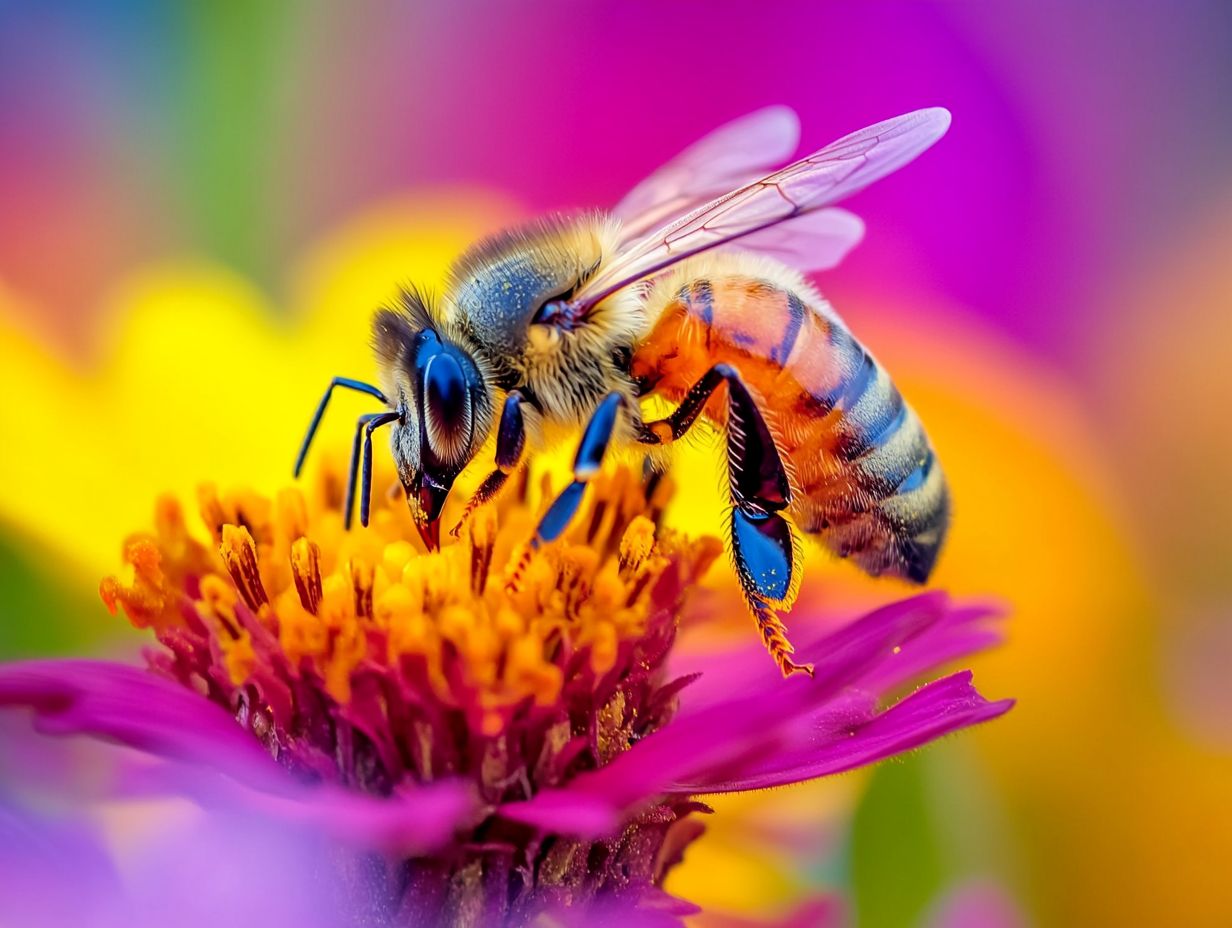
Bees play a crucial role in biodiversity by pollinating plants. This contributes to the reproduction and growth of various species in an ecosystem.
Why are bees considered important for the environment?
Bees are important for the environment because they help maintain the balance of ecosystems. They do this by pollinating plants, which in turn supports the growth of other organisms and helps with nutrient cycling.
How do bees contribute to food production?
Bees are responsible for pollinating a large variety of crops, fruits, and vegetables. This helps to produce a significant portion of the world’s food supply.
Are bees in danger of extinction?
Yes, many bee species are facing threats of extinction. Factors such as habitat loss, pesticide use, and climate change contribute to this crisis. This is a significant concern for biodiversity and food production.
Act now to protect these vital pollinators!
What can be done to protect bee populations?
To protect bee populations, we must raise awareness of their vital role in our ecosystem.
Reducing harmful pesticides and providing safe habitats will help them thrive.
How can individuals help support bee populations?
Everyone can help by planting flowers that attract bees.
Avoid using pesticides and support local beekeepers who work hard to protect our buzzing friends.

